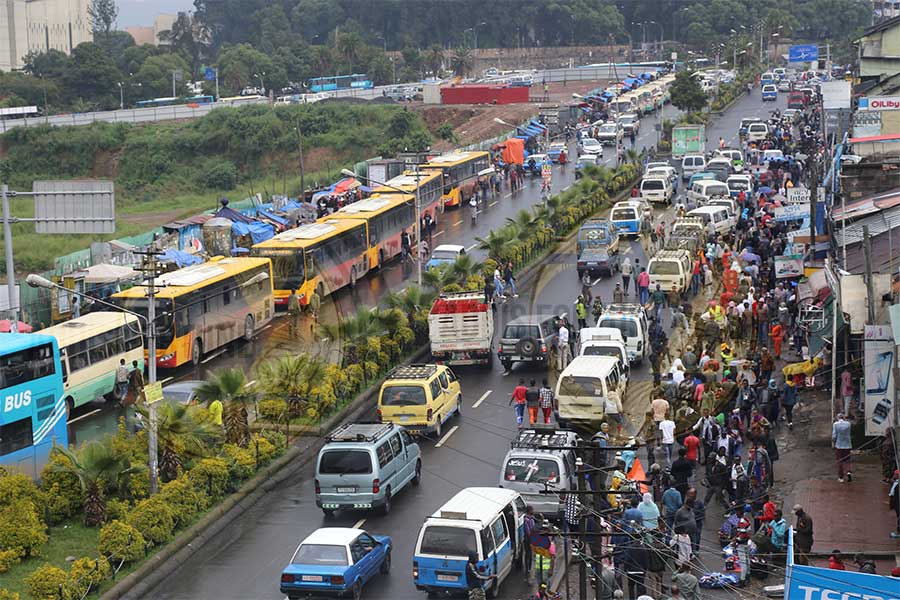A busy taxi rank in Addis Ababa, Ethiopia. Picture credit – Addis Fortune
CLAIM: Zimbabwe’s fuel consumption is the same as Ethiopia’s, despite the east African country’s significantly higher population.
Source: Reserve Bank of Zimbabwe governor John Mangudya during a Parliamentary portfolio committee hearing.
VERDICT: False. Zimbabwe’s annual fuel consumption of 1.5 billion litres for 2019, as reported by the RBZ governor, is less than half Ethiopia’s, going by the latest available official data.
On June 3, Reserve Bank of Zimbabwe governor John Mangudya appeared before Parliament’s Energy portfolio committee, along with petroleum industry players. During his submission, Mangudya claimed that:
“We use 1.5 billion litres of fuel in a year. Ethiopia uses 1.5 billion litres of fuel in a year. But Ethiopia has more than 100 million people…Zimbabwe has 14 to 15 million people but we all (sic) use 1.5 billion litres of fuel in a year.”
[Claim appears at 2:09:45 of linked video recorded by Open Parly Zimbabwe].
Official petroleum sales data from Ethiopian Petroleum Sales Enterprise – the country’s sole importer and distributor of refined petroleum products – shows that consumption has averaged 2.4 billion litres annually since 2013.
The consumption trend shows a year-on-year increase in each subsequent year since 2013, rising from 1.7 billion litres in 2013/14 to 3.48 billion litres in 2017/18, according to the latest available data.
| Year | Diesel (litres) | Petrol (litres) | Total (litres) |
| 2013/14 | 1,558,342,000 | 211, 598,000 | 1,769,940,000 |
| 2014/15 | 1,703,263,000 | 237,773,000 | 1,941,036,000 |
| 2015/16 | 1,929,581,000 | 307,817,000 | 2,237,398,000 |
| 2016/17 | 2,235,303,000 | 366,659,000 | 2,601,962,000 |
| 2017/18 | 2,876,885,117 | 603,220,052 | 3,480,105,169 |
Source: Ethiopian Petroleum Sales Enterprise
Conclusion:
The RBZ governor’s claim that Zimbabwe has the same fuel consumption level as Ethiopia is incorrect. The latest available official data from the two countries shows that Ethiopia’s petrol and diesel usage is at least two times Zimbabwe’s consumption.
Do you want to use our content? Click Here












